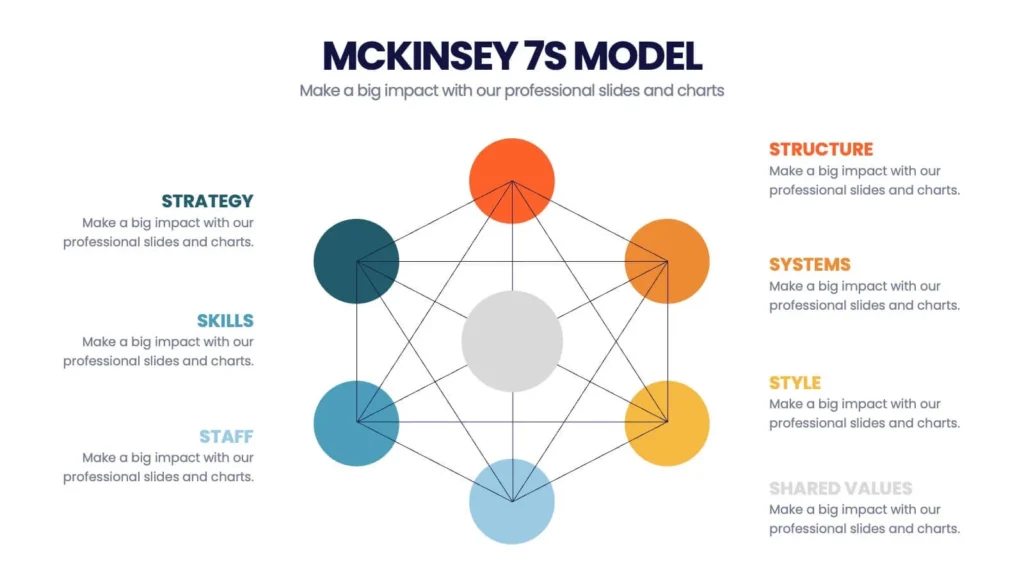Have you ever heard the term diagnosing organizational effectiveness? This term refers to a systematic process to assess and improve the performance of an organization.
Generally, this is one of the most important materials to be learned by HR management to maximize performance in a company.
What Method Used for Diagnosing Organizational Effectiveness?
There are generally many methods or models used to conduct organizational effectiveness diagnosis. We will describe some of the most popular methods and the key points applied to the concept

1. McKinsey’s 7S Model
Firstly, there is the McKinsey 7S model which was first created by Tom Peters and Robert Waterman in the early 1980s. This method is quite popular and is widely applied by companies both from within and outside the country.
In its application, the McKinsey 7S concept contains several points such as
- Structure: Organizational design and management structure
- Systems: Management systems and technology
- Staff: Human resources and skills
- Processes: Business and operational processes
- Planning: Strategic plans and objectives
- Physical: Physical environment and infrastructure
- Culture: The culture and values of the organization
The advantage of this method is that it helps you understand the broader impact of change initiatives on the entire organization. However, it does not analyze external factors and their impact on the organization.
2. Six Box Weisboard
Furthermore, there is the six box weisbord model which is also quite widely used to diagnose organizational effectiveness. The person who first invented this model was Marvin Weisbord.
This model is prepared to diagnose system problems (goals, structure, relationships, rewards, leadership, and work mechanisms).
Yes, this method emphasizes on the above points to build organizational effectiveness. Furthermore, these points include the following:
- Purpose: Explain the purpose of the organization in a straightforward manner that can be understood by all the workforce.
- Structure: Discusses the organizational structure of power relations and relationships in each department.
- Relationship: refers to assessing the relationships between individuals, groups, and departments effectively.
- Reward: analyzes formal or informal reward systems to ensure fairness and appropriateness.
- Leadership: Focuses on management actions in effectively managing people and facilities to achieve goals.
- Helpful mechanisms provide methods that can help the workforce coordinate their activities this can be in the form of HR SOPs, reports, and so on.
Related posts: 3 HR Survey Tools for Employees, Our Best Recommendation
Benefits of Diagnosing Organizational Effectiveness
There are actually many other models that can be used to diagnose the effectiveness of an organization.
But regardless of the choice of models and methods, it is certain that this action is quite important to improve the quality of a company. Effectiveness diagnosis can provide the following benefits:
1. Identification for Improvement
By applying one of the diagnosis models above, your company can identify areas or parts that need improvement. For example, the application of Six Box Weisbord, recommends organizations to have a good helpful mechanism to help employees coordinate their activities.
If a business entity has not implemented this aspect well, then the evaluation process can easily focus on that part first.
2. Development of Better Strategies
In addition, effectiveness diagnosis can also provide an overview of the condition of the organization, the challenges it is facing, and the opportunities it can achieve.
By knowing this, the management of the company can determine the right steps to plan a better development strategy in the future. Decisions made based on data can gradually increase organizational effectiveness.
3. Maximizing Effectiveness and Efficiency
Of course, the main goal of effectiveness diagnosis is to reach the peak of stability. When a system and work procedures run well, minimal obstacles, everything is coordinated smoothly, it indirectly affects the level of productivity of the workforce in the company.
Related post: Technology in Performance Management Improves Efficiency and Output
How to Determine Best Method for This?
There is no instant way to determine the diagnosis model of organizational effectiveness. Companies may need to test several existing concepts, then see the changes or progress that have been implemented to assess the suitability of the model to the needs of the organization.
Because each of these models, be it McKinsey’s 7S, Weisbord’s Six Boxes, and others, have their own advantages and disadvantages, no method is 100% perfect.
Please discuss with your internal team and HR to learn more about this issue.
If you wish, hr-management-slides.com provides a template for diagnosing organizational effectiveness diagnosis material. Not only get one discussion, but we have summarized it into one in a complete HR training material package with a total of 15 aspects.
To find out more about this material or consulting about HR issues, you can contact HR consulting services.
Click the image to download for free.





